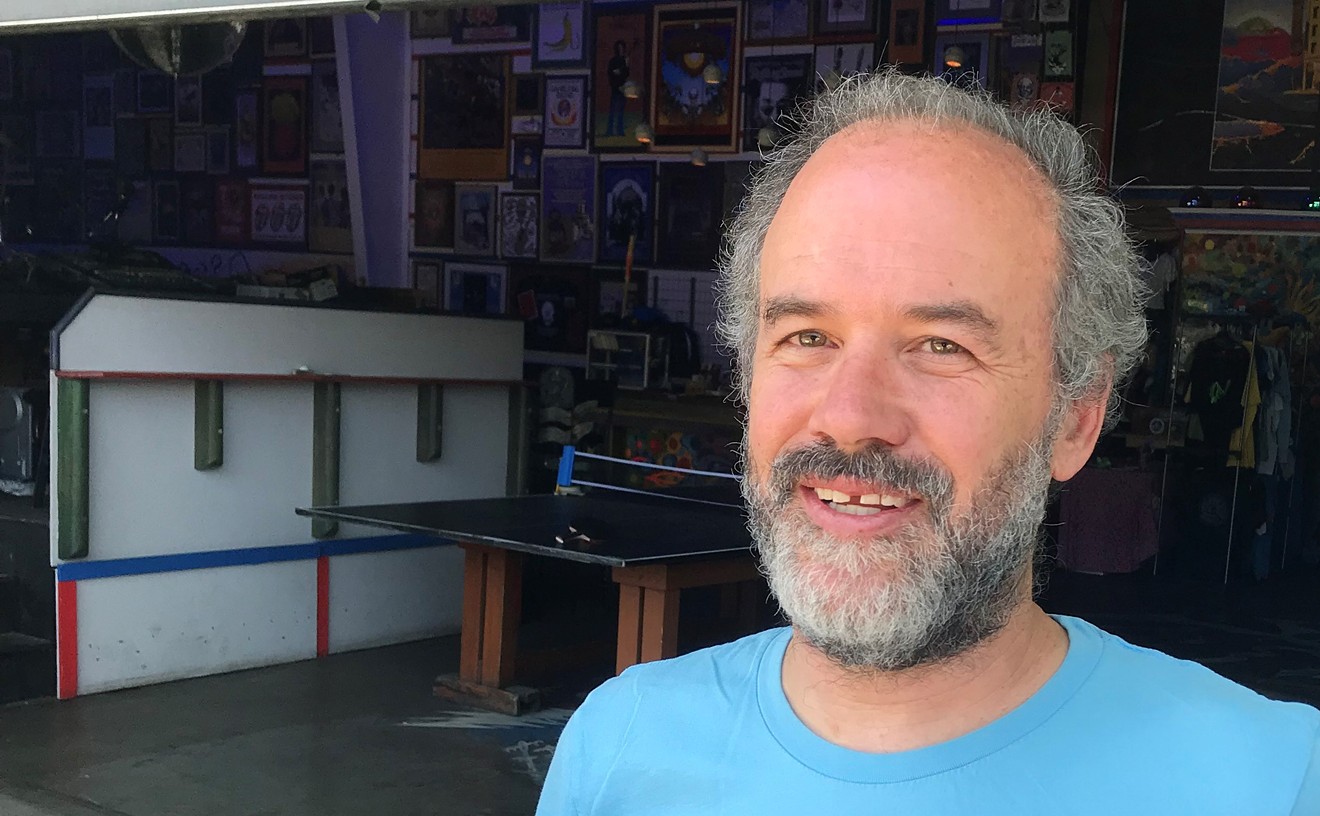Although the children did not suffer physical injuries during the incident, their presence amid such a deadly encounter raised questions aplenty about what went down; officers on the scene claimed to have been unaware that the kids could become collateral damage at the outset of the episode, but they knew full well when Martinez was put down. Nonetheless, Denver District Attorney Beth McCann has deemed the shooting justifiable.
This conclusion, shared in a decision letter from McCann to Jefferson County Sheriff Jeff Shrader that's accessible below, was reached without the benefit of video showing the shooting itself. Because the cops who took part in the gun-down weren't wearing body cameras, the only footage available for review was captured by law enforcers who arrived at the scene after the fact.
At around noon on February 1, according to the document, Deputy Joshua Clesi of the United States Marshals Service, on assignment to the Metro Gang and Gun Task Force, was conducting surveillance of a residence at 216 South Canosa Court regarding a parole-violation warrant on Martinez issued the previous month. Martinez had originally been charged with selling a sawed-off shotgun and accompanying ammo to a confidential informant in exchange for 3.7 grams of meth; the home belonged to his ex-wife.
Clesi subsequently requested additional resources, the letter notes, and help soon arrived in the persons of Jeffco Investigator Patrick Schreiner, plus a special agent from Immigration and Customs Enforcement (ICE), another from the Drug Enforcement Administration (DEA) and an extra U.S. Marshals Service deputy. The group staked out the area for the better part of the afternoon.

This photo shows a bullet hole in the windshield of the vehicle driven by Sandra Pacheco.
Denver District Attorney's Office
A subsequent chronology of events derived from witness interviews and other investigatory information states that Martinez soon emerged from the house and entered the passenger side of the Taurus. At that point, task force members used two vehicles to try to box in the Taurus. Schreiner, wearing a tactical vest emblazoned with the word "SHERIFF" across the back, then exited his own ride, a Toyota Tacoma pickup, displayed his gun and ordered the occupants of the Taurus to "show their hands."
In response, Pacheco allegedly drove her car into Scheiner's Tacoma, then backed into another car behind her. That prompted Schreiner to move toward the front of the Taurus, gun drawn, and open fire because he was "in fear of his life" — a phrase officers are taught to utter in such scenarios.
Pacheco was hit twice, in the right arm and the left arm, but she kept trying to flee the scene, pushing forward against the Tacoma until the truck partially rotated out of the way. But she didn't get far; the Taurus came to a stop in front of another house on the block, at 221 South Canosa Court.
After another task forcer's vehicle zoomed forward to prevent the Taurus from motoring away again, she removed Pacheco and began to address her wounds while her colleagues again ordered Martinez to show his hands. By now, the law enforcers knew about the toddlers in the backseat, but Schreiner is said to have stood on the driver's side of the Taurus, putting him "tactically in position to focus on Martinez without having the children...potentially in the line of fire."
Next, the letter goes on, Martinez reached toward his waistband and said they "would have to kill him and he would not submit to the officers' authority and be arrested without a fight." Shortly thereafter, Deputy Clesi tased Martinez, but his actions "had minimal effect." When another officer tried to pull Martinez from his seat by his shirt collar, the suspect is quoted as saying "I'm going to kill you, motherfucker," leading to the events captured in the following excerpt:
Investigator Schreiner, while standing on the passenger side of the Ford Taurus, observed Martinez reaching toward his waistband. Martinez at some point also reached toward the children in the backseat. Investigator Schreiner, believing Martinez was attempting to obtain a weapon, feared for his safety, the safety of the children and the safety of the law enforcement officers. Investigator fired three gunshots at Martinez, striking his upper left shoulder and his right forearm.These don't sound like fatal wounds, but they were. Martinez was pronounced dead at 3:36 p.m.
Because no members of the task force wore body cameras, the dialogue, movements or gestures attributed to Martinez weren't confirmed by video evidence. And no gun was found in the Taurus. The only potential weapon among the inventory of items in the car was a folding knife that had been clipped to his sweat pants. In addition, cops found some suspected crack cocaine in the pocket of Martinez's jacket.
In her analysis of this narrative, DA McCann doesn't suggest that the task force went overboard by trying to bust a parole violator during the middle of the day on a public street. Neither does she weigh in on whether its members should have contacted Martinez before he got into the car, since firing into vehicles is increasingly viewed as highly problematic; note that the Denver Police Department disallowed such shootings in June 2015, months after teen car thief Jessie Hernandez died under similar circumstances. She stops well short of castigating Schreiner for pulling his trigger so close to the kids, implying that she accepts his explanation that he felt doing so would enhance their safety instead of endangering it. But none of the other cops on the scene followed suit.
As for the absence of a gun in the car, that doesn't matter from a legal perspective. McCann writes that "officers are...entitled to rely on the doctrine of 'apparent necessity' so long as the conditions and circumstances are such that a person would reasonably believe, erroneously or not, that action was necessary."
But while McCann determines that "Investigator Schreiner did not use deadly physical force without lawful justification under Colorado law and no criminal charges are warranted," she does add: "I expect the various local and federal departments will take a close look during the administrative review as to whether there was a coordinated plan to effect this arrest with representatives of so many law enforcement agencies and whether the response was in accordance with policy and if that policy is appropriate in all situations."
Click to read the decision letter and the shooting of Robert Martinez and Sandra Pacheco.













